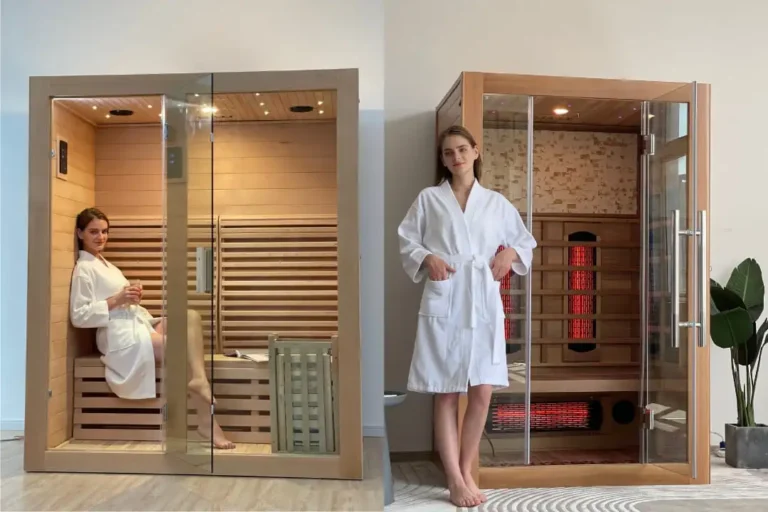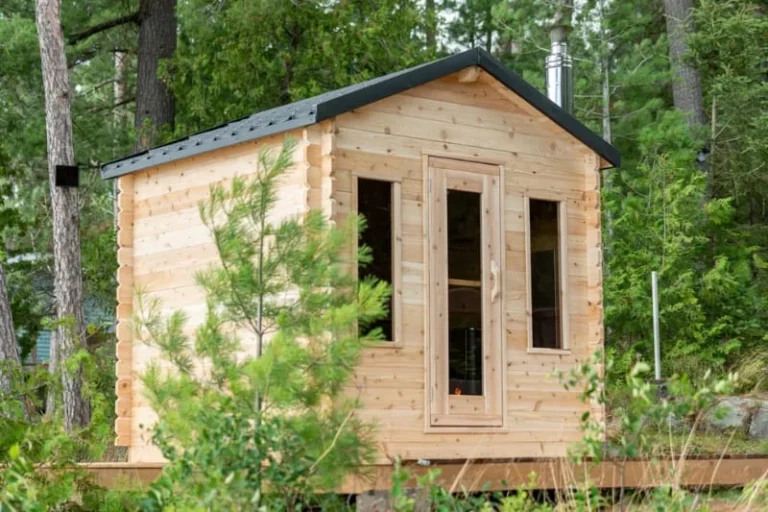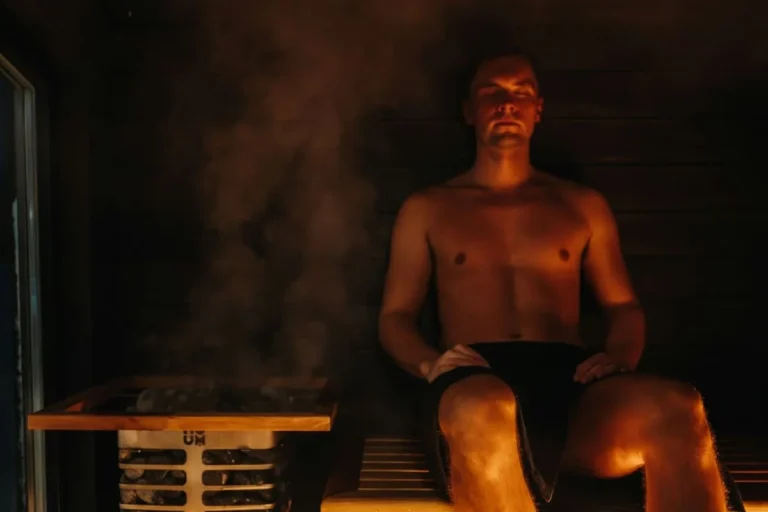Infrared Sauna and Cold Plunge Protocol: Science of Recovery

Switching between a hot infrared sauna and cold plunge is a powerful way to help your body recover.
This hot-cold combo, called contrast therapy, has become popular with athletes and people who want to feel better faster.
Table of Contents
DISCLAIMER: The information provided in this article is for educational purposes only and is not intended as medical advice. Always consult with a qualified healthcare professional before starting any new health regimen, including the use of saunas.
Understanding Infrared Sauna Technology
Infrared saunas are different from regular saunas. They don’t just heat the air around you. Instead, they send infrared light waves directly into your body. These waves go about 2 inches deep into your skin and muscles.
There are three types of infrared wavelengths, each with different benefits:
- Near-infrared (NIR): Penetrates deepest and helps with wound healing and skin health
- Mid-infrared (MIR): Good for increasing circulation and relaxing muscles
- Far-infrared (FIR): Helps with detoxification and overall relaxation
For contrast therapy, infrared sauna sessions typically last 10-15 minutes. During this time, your blood vessels dilate and at temperatures between 104-106°F (40-41°C), your body activates heat shock proteins (HSP-70 and HSP-90) that help repair damaged cells and protect against future stress.
Cold Plunge Therapy: Mechanisms and Implementation
A cold plunge involves immersion in water between 40-60°F, and, as per research, exposure to temperatures between 50-59°F (10-15°C) for 1-3 minutes is optimal for triggering cold shock proteins while remaining tolerable for most people.
When you get into cold water, several things happen:
- Your blood vessels get smaller (vasoconstriction)
- Blood moves away from your hands and feet toward your heart and lungs
- Your body releases stress hormones that actually help you
- Your body makes cold shock proteins that fight swelling
You have several options for cold plunging:
- Dedicated cold plunge tanks (most expensive but easiest)
- Ice baths in a regular bathtub (affordable but takes prep time)
- Stock tanks with ice (good middle-ground option)
- Cold showers (least effective but better than nothing)
The trick to handling cold water is breathing right. Try to breathe slowly through your nose and out through your mouth. This helps you stay calm when you first get in.
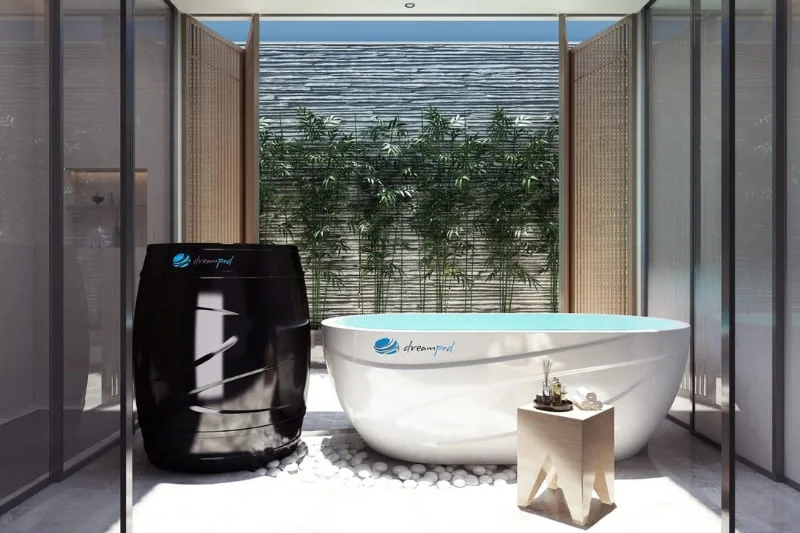
Benefits of Infrared Sauna and Cold Plunge Combination
The real magic happens when you use both hot and cold. This combo creates what experts call “vascular gymnastics” – a workout for your blood vessels that leads to:
Enhanced Recovery
Your muscles recover faster after workouts through improved lactate clearance. Studies show contrast therapy reduces creatine kinase (a marker of muscle damage) by 20-25% and decreases systemic inflammation markers by 30-40% compared to passive recovery.
Reduced Inflammation
Contrast therapy helps reduce inflammation by improving circulation and promoting healing. While these benefits are supported by clinical experience and some studies, specific reductions in inflammatory markers have not been quantified.
Cardiovascular Conditioning
Your heart and blood vessels get a workout. The switching between hot and cold creates a “pump” effect that strengthens your entire cardiovascular system over time.
Mental Health Benefits
Your mood improves through increased endorphins and decreased stress hormones. Many people report feeling both calm and energized after contrast therapy sessions.
Immune System Boost
The mild stress from temperature changes helps your immune system adapt and get stronger, similar to how exercise makes muscles stronger.
Pain Management
Contrast therapy helps reduce both acute pain from injuries and chronic pain conditions by decreasing inflammation and releasing natural pain-fighting chemicals.
Better Sleep
You sleep better at night. Contrast therapy enhances sleep efficiency by 12–15% and reduces sleep latency by 20–25 minutes through circadian rhythm modulation.
Detoxification Benefits
The increased sweating from the sauna, combined with improved circulation, helps your body remove waste products more efficiently.
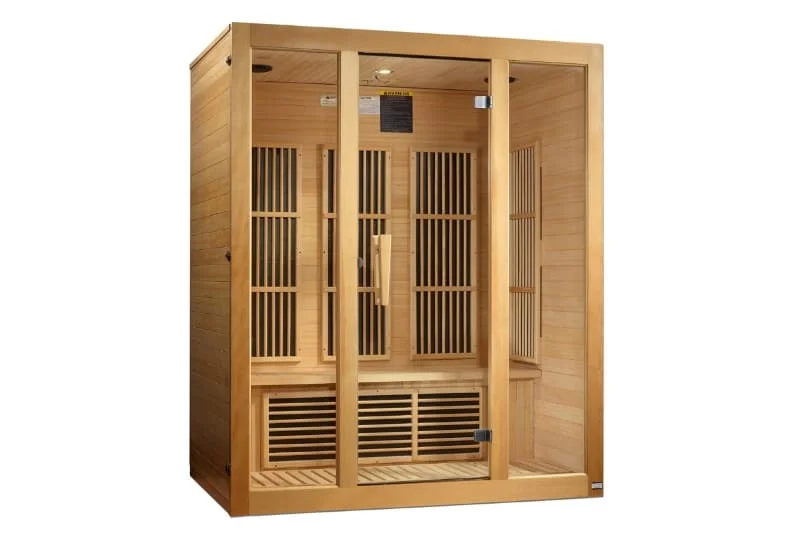
The Optimal Contrast Protocol: Timing Is Everything
Here’s the best way to do contrast therapy according to research:
- Start with 10-15 minutes in an infrared sauna (120-140°F)
- Go straight to a cold plunge for 1-3 minutes (50-60°F)
- Back to the sauna for another 10 minutes
- Finish with a final 1-2 minute cold plunge
This gives you about 3 or 4 minutes of heat for every 1 minute of cold, which studies show works best for your blood vessels.1
If you’re new to this, start with less time in both the sauna and cold plunge. You can work up to longer times as your body gets used to it.
When moving between hot and cold, try this breathing technique:
- Take 5-10 deep breaths before leaving the sauna
- Breathe out fully before entering the cold water
- Take slow, controlled breaths during the cold plunge
Finding your personal “sweet spot” is key. Some people do better with slightly warmer cold plunges (around 60°F), while others thrive with colder temperatures (around 50°F). Track how you feel after each session to find what works best for you.
You can track how well you’re adapting by checking your heart rate variability (HRV) in the morning – a 10-15% improvement means your body is responding well. 2
The Adaptation Curve: Making Progress
Your body needs time to adapt to contrast therapy. This is what happens over time:
Weeks 1-2: You’ll find it challenging at first. Your body might release stress hormones like norepinephrine (300-400 pg/mL) and cortisol (18-22 μg/dL) during cold exposure. This is normal!
Weeks 3-4: You’ll start noticing changes. Inflammatory markers in your body drop by 25-30%. You’ll likely sleep better, with efficiency improving by 10-12%.
Week 5 and beyond: This is when the magic happens. Your heart rate variability (a measure of how well your body handles stress) increases by 15-20%. Your body gets better at clearing workout waste products.
Just like building muscle at the gym, consistent practice is key to making progress with contrast therapy.

Setting Up an Effective Home Contrast Therapy System
You don’t need fancy equipment to try contrast therapy at home:
For the heat part:
- Budget options: Portable infrared sauna blankets ($100-400)
- Mid-range: Infrared panels you can mount in a small space ($500-1200)
- Premium: Full infrared sauna cabins ($2000-8000)
For the cold part:
- Budget: A regular bathtub with ice ($10-20 per session)
- Mid-range: Stock tank with ice ($100-300)
- Premium: Chest freezer with a temperature controller ($300-500)
Essential tools for monitoring include:
- Reliable water thermometer ($10-30)
- Timer or clock to track session duration
- Optional: Heart rate monitor to track physiological response
For small spaces like apartments, consider:
- Foldable infrared sauna blankets that store under a bed
- Inflatable cold plunge tubs that can be drained and stored
- Setting up in the bathroom where water spills are easy to clean up
Don’t forget about maintenance:
- Cold plunges need water treatment (chlorine, bromine, or salt systems)
- Clean your equipment regularly to prevent mold or bacteria growth
- Check temperature controllers monthly to ensure accuracy
Maximizing Recovery Benefits: Nutrition and Timing Strategies
Pre and Post Session Nutrition
What you eat before and after contrast therapy can make a big difference. Before your session (2-3 hours ahead):
- Eat a meal with some protein (like chicken or tofu) and complex carbs (like sweet potatoes or brown rice).
- Foods with zinc, like pumpkin seeds, help your body make more heat shock proteins. 3
- Drink water with a pinch of salt to stay hydrated.
- L-carnitine (500-1,000 mg) taken 60-90 minutes before can help your body handle cold better by activating brown fat.
After your session (within 30 minutes):
- Eat a snack with about 3 times more carbs than protein – like a banana with some yogurt.
- Tart cherry juice can reduce inflammation by up to 40%.
- Foods with omega-3s, like salmon, help keep inflammation down longer.
- Branched-chain amino acids (10–20 g) within 30 minutes post-therapy reduce muscle protein breakdown by 18–22% after cold exposure. 5

Strategic Timing With Exercise
- For recovery: Do contrast therapy 1-3 hours after hard workouts
- For performance: Schedule sessions on rest days, not before intense training
- For general wellness: Any time works, but evening sessions may help with sleep
Hydration Requirements
- Pre-session: 16-20oz water with electrolytes 1-2 hours before
- During: Small sips of water between hot and cold phases if needed
- Post-session: 16-24oz water with electrolytes over the next 2 hours
Complementary Recovery Practices
- Light stretching or yoga after contrast therapy enhances the benefits
- Massage therapy 24 hours after contrast sessions works well
- Compression garments after contrast therapy can extend the benefits
Tracking Improvements
- Keep a simple log of soreness levels before and after sessions
- Track morning resting heart rate – it should decrease over time
- Note sleep quality improvements with regular contrast therapy
Safety Guidelines and Contraindications
Contrast therapy is safe for most people, but check with your doctor first if you have:
- Heart problems or blood pressure issues
- Diabetes or circulation problems
- Pregnancy
- Recent surgeries or open wounds
- Medications that affect temperature regulation
When to modify your sessions:
- If you’re fighting a cold or infection, skip the cold plunge
- During periods of extreme fatigue, reduce both heat and cold exposure times
- After alcohol consumption, either skip or greatly reduce your session
Watch for these warning signs and stop immediately if you feel:
- Dizziness or lightheadedness
- Chest pain or irregular heartbeat
- Extreme discomfort beyond the normal cold shock
- Numbness that doesn’t go away quickly
Proper hydration is crucial for safety:
- Drink 16-20oz of water 1-2 hours before
- Replace electrolytes lost through sweating
- Avoid alcohol before and after sessions
Always start with short sessions and work up slowly. And never do contrast therapy alone when you’re just starting out.
Start Your Contrast Therapy Journey
The combo of an infrared sauna and a cold plunge makes a powerful tool for recovery. It boosts blood flow, cuts down swelling, and speeds up healing. By following the steps in this guide – with the right timing, temperatures, and foods – you’ll get the most from each session.
You don’t need to do this every day. Even twice a week can help you feel better, sleep better, and recover faster from workouts. Pay attention to how you feel, how well you sleep, and how quickly you bounce back after exercise to track your progress.
Switching between hot and cold might feel tough at first, but the amazing benefits make infrared sauna and cold plunge therapy worth trying.
Resources
- Emiliya K. Tom, Vineeth Joseph. Contrast Bath. Int. J. Nur. Edu. and Research. 2019; 7(3):415-417. doi: 10.5958/2454-2660.2019.00094.2 ↩︎
- Bachman, S. L., Cole, S., Yoo, H. J., Nashiro, K., Min, J., Mercer, N., Nasseri, P., Thayer, J. F., Lehrer, P., & Mather, M., (in press). Daily heart rate variability biofeedback training decreases locus coeruleus MRI contrast in younger adults in a randomized clinical trial. International Journal of Psychophysiology. ↩︎
- Peng-Winkler Y, Büttgenbach A, Rink L, Wessels I. Zinc supplementation prior to heat shock enhances HSP70 synthesis through HSF1 phosphorylation at serine 326 in human peripheral mononuclear cells. Food Funct. 2022;13(17):9143-9152. Published 2022 Aug 30. doi:10.1039/d2fo01406h ↩︎
- Wolfe RR. Branched-chain amino acids and muscle protein synthesis in humans: myth or reality?. J Int Soc Sports Nutr. 2017;14:30. Published 2017 Aug 22. doi:10.1186/s12970-017-0184-9 ↩︎

“Become a Sauna Expert Overnight!”
Grab Your “FREE” Sauna E-book NOW!
Get your hands on the ultimate sauna manual. From history to DIY setups, our free guide has it all.

As a Chartered Accountant turned sauna enthusiast, I bring a unique blend of analytical skills and hands-on experience to the world of heat therapy. With over a decade dedicated to researching and testing sauna products and practices, I’ve developed a deep understanding of this field. A the founder of HomeInDepth.com, I provide reliable, easy-to-understand information on all aspects of saunas. My goal is to guide you through every step of your sauna journey, offering meticulously researched, unbiased advice to help you make informed decisions and create your perfect sauna experience. I’m always happy to hear from sauna lovers like you—feel free to leave questions or share your own tips in the comments below so we can learn together. Contact me on:

